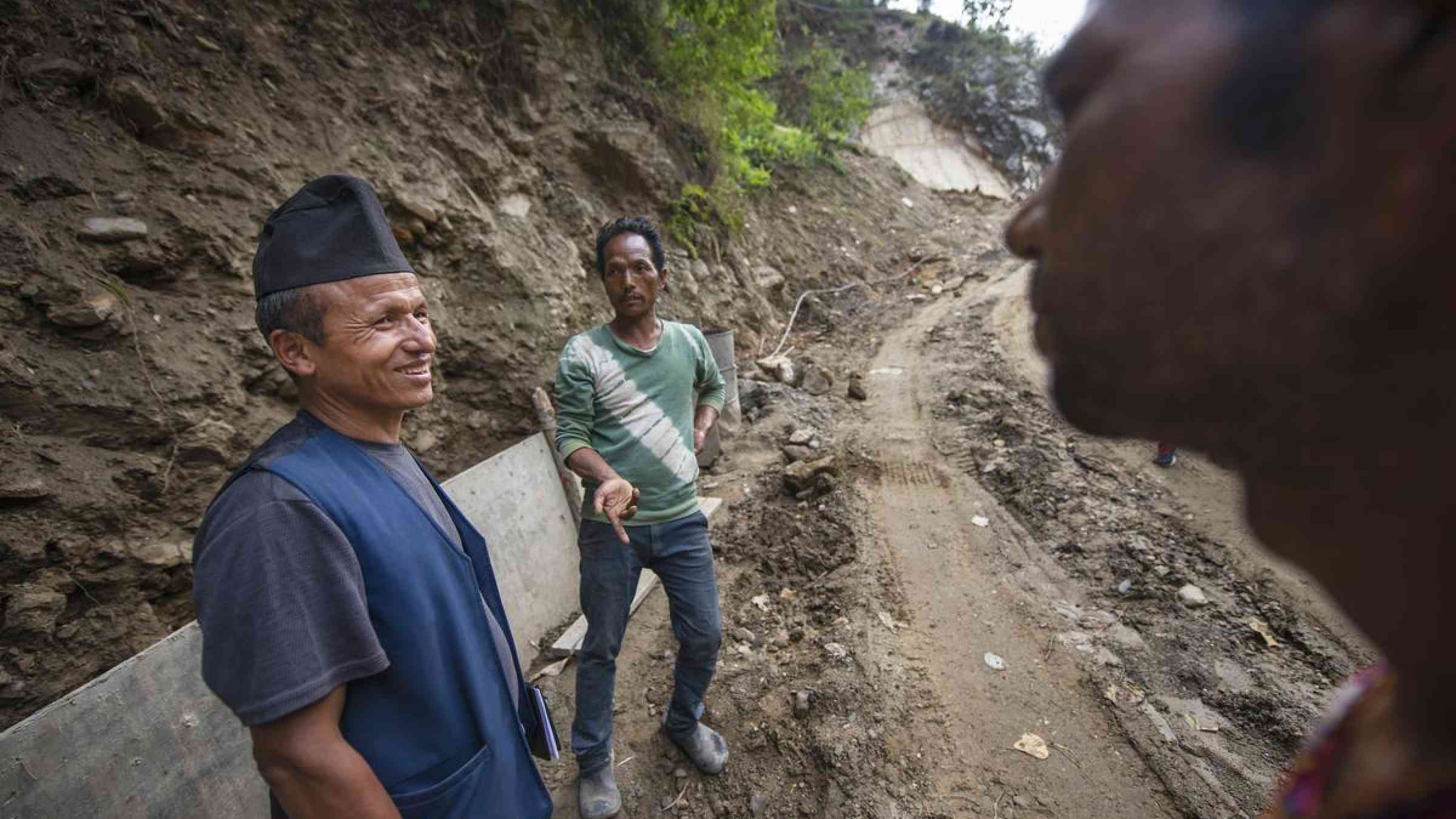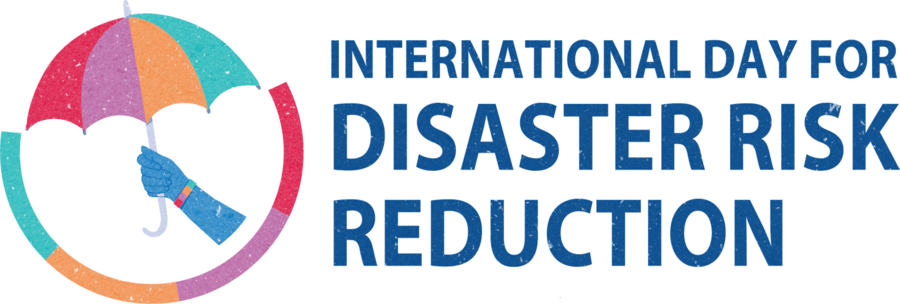Protecting Nepal through enhanced evidence-based disaster preparedness and response

Today is International Day for Disaster Risk Reduction, and this year's theme is "Fighting Inequality for a Resilient Future."
International Day for Disaster Risk Reduction 2023 focuses on the reciprocal relationship between disasters and inequality. Inequality and disaster vulnerability are two sides of the same coin; people struggling to make ends meet often live in disaster-risk areas. They also have less access to resources to prepare for and recover from disasters. When disasters strike, they often exacerbate existing inequalities. People already marginalised are more likely to lose their homes, livelihoods, and loved ones. They may also have difficulty accessing essential services like food, water, and shelter.
Bhotekoshi Rural Municipality and Barhabise Municipality are prone to annual landslides and flash flooding. Therefore, to prepare the local government and community to respond before, during, and after shocks, a functional level Forecast-based Action-Shock Responsive Social Protection (FbA-SRSP) simulation was organised in Bhotekoshi Rural Municipality from 26th - 29th September 2023. The functional level simulation was organised under the leadership of the Bhotekoshi Rural Municipality in coordination with the European Union-funded Pratibaddha project, which is being led by our team from People in Need Nepal with our consortium partners Community Self Reliance Center (CSRC), Save the Children Nepal; and our technical partner Scott Wilson Nepal (SWN).
The simulation is a model or a practical demonstration that illustrates how an existing or proposed system would operate and support decision-making by simulating different scenarios or processes. It involves deploying resources, personnel, and equipment to simulate a realistic response to a disaster or emergency. The simulation tested and evaluated existing local disaster preparedness and response/emergency plans, contingency plans, operational capabilities, coordination, communication, and collaboration modalities. It also identified areas of improvement for timely, better-targeted responses in the most effective and cost-efficient way.
During the four-day event, the Department of Hydrology and Meteorology released a rainfall forecast (special bulletin, 3-day forecast, 24-hour impact-based forecast) in different periods and flows. Based on the rainfall forecast, the District Administrative Office informed the rural municipality through multiple channels (email, phone calls, SMS), then disseminated to the Local Disaster Management Committee (LDMC) via their Viber group. To reach out to local communities and authorities quickly and effectively, a Viber group has been created to share the on-site risk information in multiple ways (text, voice message and photos/videos). Having all the concerned stakeholders in one place makes the information flow quicker, ultimately supporting the stakeholders in quick decision-making based on the forecast.
The simulation involved community members and the relevant ward, rural municipality, district, and central-level stakeholders. All participants played their role in reacting and responding based on the forecast before, during and after the disaster. Nabin Shrestha, our Shock Responsive Social Protection Lead, says, "This simulation was conducted to evaluate the Disaster Preparedness and Response Plan prepared by Bhotekoshi Rural Municipality and early action plan based on the weather forecast. At the same time, implement the design tweaks for robust business continuity of existing social protection programs before, during, and after the shocks, along with using its existing data and established mechanisms in the activities related to disaster preparedness and response to provide services; relief supports and various responses in a low cost, fast and effective manner."
The exercise was designed in three phases: preparedness, response, and rehabilitation. Participants were required to perform roles and responsibilities as if responding to an actual incident. They followed established standard operating procedures (SOPs) and the incident command's direction. Effective coordination, communication, and a focus on safety were paramount to managing the simulated incident successfully and minimising the impact on lives and property.This type of exercise tests coordination, communication, and the application of established procedures. Dichhen Sherpa, Deputy Chairperson of Bhotekoshi Rural Municipality, was immensely thankful to the Pratibaddha project for conducting the simulation. She shares,
"This exercise helped us check whether policies and projects prepared by ward and municipality function well. Besides, next year's plan will incorporate the good aspects and things we learned during this exercise. We actively participated in the exercise to further help coordination and cooperation and demonstrate how people should be alert and what to do and what not to do during a disaster."
She adds, "Anything can happen during a disaster; roads may be blocked, all you could see and hear is people wailing and crying, see tragic incidents; therefore, one must make themselves strong. To be safe, you'll need to track the alert messages and follow the instructions shared by the municipality. You must go to a safe location as soon as you receive it. That way, we'll be able to save lives and reduce the amount of damage."
The simulation involved the entire community, especially people with technical knowledge like teachers, trained human resources, firefighters, paramedics, and others. The simulation worked on building the community's abilities at different levels through special training. This will help strengthen the community, better respond to emergencies, and bring people closer together.
Dukchhiring Tamang, a 40-year-old resident of Larcha, Bhotekoshi, was one of the simulation participants. Dukchhiring resides in a flood and landslide-prone area. After participating in the simulation, he shared that it was one of the most fruitful exercises for him and the community. He adds:
"During any disaster, we must rescue the elderly and people with disabilities first, whereas we used to do the opposite. Even while running, we only think of saving ourselves and not about valuable paper and belongings. However, after this workshop, we learnt that we must prepare a Go Bag with emergency materials, carry our valuable papers and belongings and evacuate to a safe place."
The simulation prioritised and ensured the safety of persons with disabilities, the elderly, and pregnant or lactating women. They are especially vulnerable to the wide-scale impacts of a disaster, which can exacerbate their disparities, leaving them struggling to cope even more during and after the emergency.
"The simulation has helped us identify preparedness gaps and recommend solutions. It's valuable training for disaster risk reduction in our community, benefiting our people and strengthening the partnership between the local government and PIN."
- Kumar Shrestha, Ward Chairperson of Bhotekoshi Municipality, Ward-2.
He added: "Through this simulation, an attempt has been made to determine how we can save the lives of this large population in the event of a flood or landslide. In such cases, the level of our preparedness, duties, and responsibilities have been discussed through this exercise. This four-day exercise helps the participants, from the central government to the local level, practice preparedness, response, coordination, and communication responsibilities before and after a disaster. This method will make us better at getting ready to handle natural disasters more effectively."
